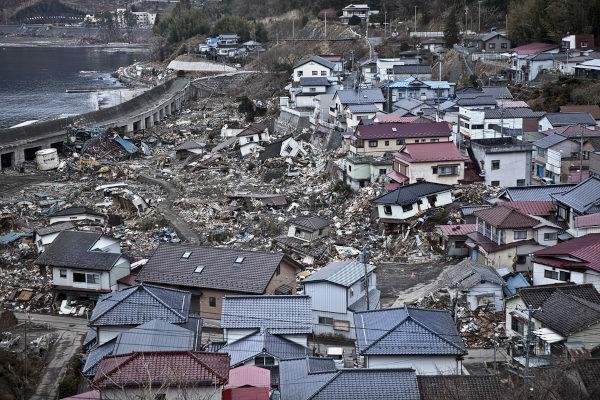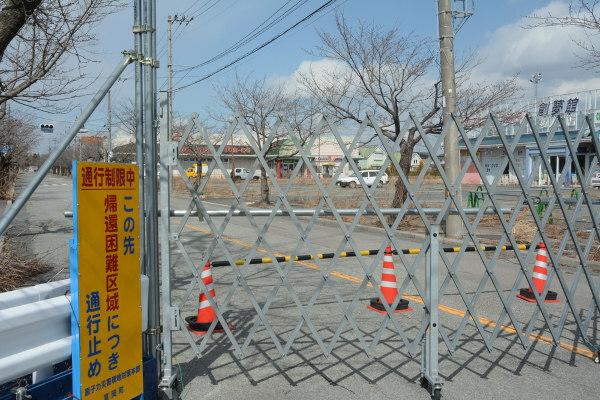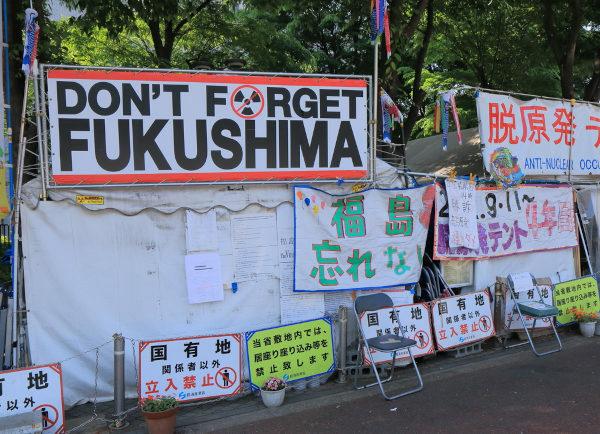O Fukushima earthquake, or Great Tohoku Earthquake, happened on March 11, 2011. The earthquake had a magnitude of 9.1 degrees on the Richter scale, being the most intense ever recorded in the country's history and one of the largest in the world.
Its cause was a movement in the fault zone where the Fossa of Japan is located, with epicenter 130 km off the Japanese coast and hypocenter at about 25 km deep. The quake caused huge waves off the coast of Japan, including the Fukushima tsunami, which triggered one of the worst nuclear accidents in history since Chernobyl.
Read too: What is a tidal wave?
Causes of the Fukushima Earthquake
The earthquake that happened in 2011 in the northeast region of the Japan, was caused by the movement of a fault linein the subduction zone where the Japan Trench is formed. Remember that the islands that make up the country are distributed over four tectonic plates, namely: do Pacific, Philippines, Eurasian and Okhotsk (a microplate that integrates the plate North-American).
The Pacific plate moves horizontally westward with respect to the plate North American, diving under the second plate and causing, on the other hand, to uplift part of this structure. The speed at which the Pacific plate's movement occurs is approximately 83 mm per year, as explained by the United States Geological Survey (USGS).
It is estimated that the horizontal movement in the fault zone that generated rupture and, consequently, the tremor was from 50 to 60 meters, which researchers considered the greatest of its kind. Even in other large earthquakes, such as the Colombia 1960, no shift of this magnitude has been seen. This process extended over a strip 400 km long and 150 km wide (in the direction in which one plate dives under another). The total energy released was equivalent to 600 atomic bombs like the one dropped on Hiroshima|1|.
How was the earthquake?
Japan's earthquake, also called the Great Tohoku Earthquake, happened on March 11, 2011 and started at 2:46 pm, in local time, and 2:26 am, Brasília time. After a series of revisions, the tremor was classified as having magnitude 9.1 in are youshut richter, being the most intense and destructive earthquake to strike Japan in the country's history. Its total running time was approximately six minutes.
According to the USGS, two days before this event in the Japanese archipelago, a series of tremors with more than 6 degrees on the Richter scale — the highest at 7.4 — were felt about 40 km from the epicenter of the earthquake on March 11 March.
The point on the earth's surface where the Tohoku earthquake originated is 130 km from the Peninsula of Oshika, located on the east coast of Japan's main island, Honshu, in the province of Fukushima. The earthquake's hypocenter (its place of origin within the earth's crust) was at a depth of 25 km, considered shallow. After the main earthquake, hundreds of secondary earthquakes (called aftershocks) of magnitude ranging from high to moderate were felt in other regions.
The city of Sendai, closest to the epicenter, was one of the most devastated by the earthquake and tsunami that followed the tremors.
Aftermath of the Fukushima Earthquake
O earthquake 2011 was the most intense in the history of Japan and the third largest on a global scale, along with the 2004 Indian Ocean earthquake, according to the USGS. The earthquake was responsible for the Japan coast shift and by changing between 10 and 25 centimeters in the Earth's axis of rotation, shortening the days by 1.8 microseconds |1|.
In addition to the direct consequences on the structure of the Japanese archipelago and on the tectonics of the area, the earthquakes in 2011 were overwhelming for the population. This was the earthquake that caused the largest number of victims in the country, leaving 18,428 dead and missing.
The earthquake, tsunami and nuclear accident sequence left a huge trail of devastation wherever it went. Damage includes fires, explosions, damage to the electrical network and interruption of energy supply and destruction or obstruction of roads and lanes. In financial terms, it is estimated that the total loss was nearly US$ 200 billion.
See too:Why is the United States so hit by hurricanes and tornadoes?
Tsunami in Fukushima
One of the most serious consequences of the 2011 earthquake was the sequence of tsunamis which he produced on the Japanese coast, reaching other countries bordered by the Pacific Ocean. The biggest waves surpassed 10 meters in height, and the waters penetrated tens of kilometers through the Japanese territory. The largest share of deaths from the earthquake was due to the tsunamis, which flooded an area of 561 square kilometers|2|.

THE Fukushima Prefecture was hit by a wave of about 14 meters, and the situation quickly escalated. The advance of the waters damaged the support generators that were being used to cool the reactors at the Fukushima I Nuclear Power Plant (Daiichi), causing three of them to melt.
Fukushima nuclear accident
As explained above, tsunami aftermath caused three reactors to melt Fukushima Nuclear Power Plant, leading to the evacuation of 300,000 residents from the surrounding area. The following day, March 12th, the first of three explosions occurred, with the others occurring on the following days (March 14th and 15th). releasing high levels of radiation into the environment.
In April of that year, the accident was classified as having level 7 on the International Scale of Nuclear Events, the most serious since the Chernobyl event in Ukraine, in 1986. The area to be evacuated initially was 20 km. However, both the region's soils and sea water were also affected., and both still go through a decontamination process today.
In all, an area of 1,150 km² was evacuated, of which 330 km² remain empty and more than 40,000 people remain far from their former homes.|3|.

Earthquakes in Japan
Japan is located in the area of the planet known as the Pacific Circle of Fire, characterized by high tectonic instability. The country registers thousands of earthquakes every year, of varying intensities on the Richter scale. Below we list the 5 worst earthquakes in Japan's history according to their magnitude.
1) Tohoku (March 11, 2011): scored 9.1 on the Richter scale and some sources estimate a total of 29,000 victims.
2) Hoei (1707): classified as a magnitude 8.6 earthquake, with 5,000 fatalities.
3) Meiji-Sanriku (1896): had a magnitude of 8.5 on the Richter scale and killed 27 thousand people.
4) Ansei-Nankai (1854): 8.4 magnitude tremor, with 10,000 fatalities.
5) Sanriku (1933): classified as a magnitude 8.4 tremor and claimed 3,000 victims.
Also access: Why are there so many earthquakes in Chile?

2011 Fukushima Earthquake Summary
The Fukushima (or Japan) earthquake occurred on March 11, 2011, at 2:46 pm local time. Its epicenter was 130 km off the east coast of the country, and its hypocenter was located 25 km away.
It was rated a 9.1 magnitude earthquake on the Richter scale, the most intense in Japan.
The quake was caused by a movement in the fault zone between the Pacific and Eurasian plates.
Shortly after the earthquake, large waves hit the Japanese coast. The Fukushima tsunami was one of the most devastating as, in addition to the destruction caused by the impact of water, it caused one of the worst nuclear disasters in the world.
The Fukushima nuclear accident is the worst since Chernobyl, Ukraine. Soils and seawater are still being decontaminated today. Tens of thousands of people who were removed from the area were unable to return to their former homes.
In all, the earthquake followed by a tsunami and a nuclear accident killed 18,428 people.
Grades
|1| ANDRADE, Fábio Ramos Dias de. Earthquakes and Tsunamis in Japan. In: USP MAGAZINE, São Paulo, n.91, p. 16-29, September/November 2011. Available on here. Accessed on March 8th. 2021.
|2| OSKIN, Becky. Japan Earthquake & Tsunami of 2011: Facts and Information. Live Science, 13 Sept. 2017. Available on here. Accessed on March 09. 2021.
|3| SAYURI, Juliana. Ten years after an earthquake, tsunami and nuclear accident, Fukushima lives echoes of the triple tragedy. Folha de S.Paulo, 06 Mar. 2021. Available on here. Accessed on March 8th. 2021.
By Paloma Guitarrara
Geography teacher
Source: Brazil School - https://brasilescola.uol.com.br/japao/o-terremoto-no-japao.htm

